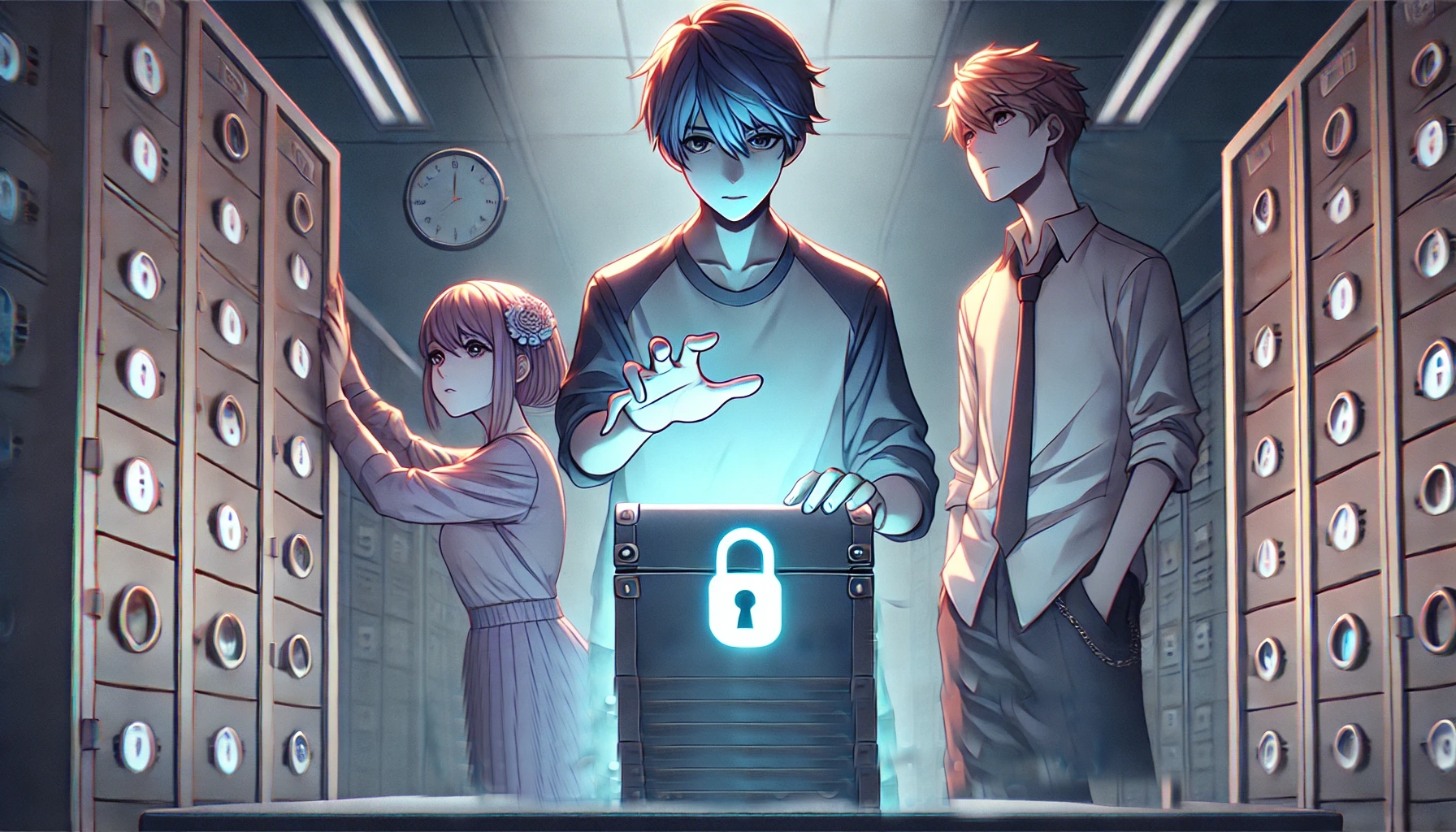Octalysis Framework Core Drive 6: Scarcity and Impatience
Harnessing Scarcity & Impatience in Educational Gamification with the Octalysis Framework
In educational gamification with the Octalysis Framework Core Drive 6, Scarcity & Impatience, we tap into our deep-seated craving for the rare, the valuable, and the vanishing. Why do students often push themselves harder when a reward seems just out of reach, or might slip away entirely? It’s not just coincidence; it’s how our brains respond to scarcity.
Imagine a student literally sprinting to class so they don’t miss their shot at the “Golden Homework Pass.” Sound extreme? Maybe. Effective? Absolutely. Scarcity turns everyday tasks into exclusive opportunities, while impatience gives students that nudge to act now. Together, they make learning feel like the final round of a game show (cue dramatic timer).
This post is part of a series! Explore the entire Octalysis Framework and see how it can help you motivate your students. (Don’t let the FOMO pull you away, there is another link at the bottom of this post!)
Quest Map
Breaking It Down
Octalysis Framework Core Drive 6: Scarcity & Impatience might seem like a strategy reserved for infomercials and sneaker drops. But its roots are psychological, and it works like a charm in the classroom when used with care. It’s all about perceived value. If something’s always available, students yawn. Make it limited-time, and suddenly it’s the thing.
Think of this core drive as your classroom version of:
- Black Friday doorbusters (but without the chaos)
- Disneyland FastPasses
- The McRib coming back “for a limited time”
Let’s explore how this shows up in education and how to channel it effectively.
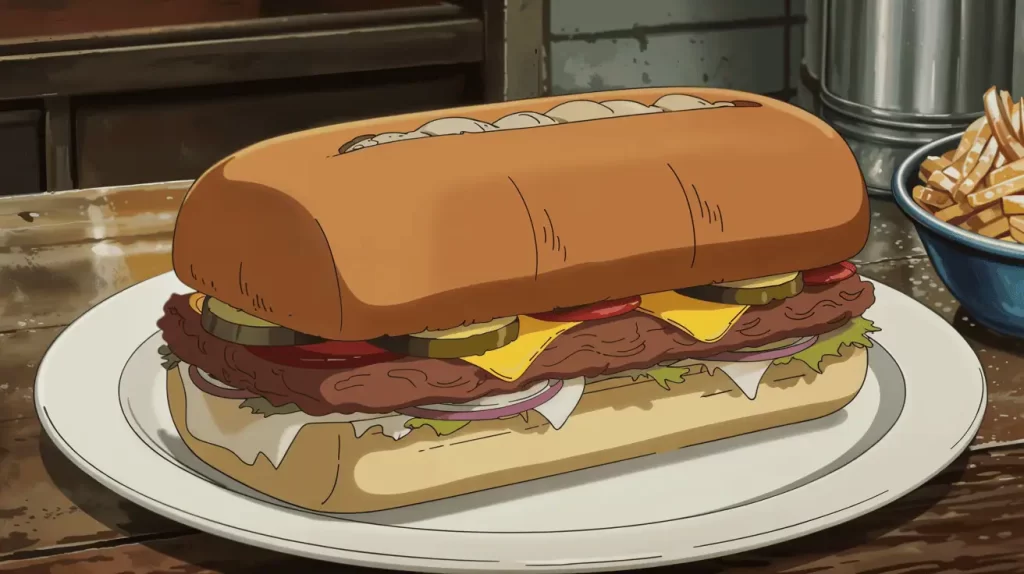
Why Scarcity Works: The Psychology of Missing Out
We all know FOMO (Fear of Missing Out) isn’t just a Gen Z buzzword. It’s a real motivator.
Here’s what happens:
- We see something limited.
- Our brains go, “If I don’t act now, I lose.”
- Cue urgency. Cue effort.
In the classroom, that might look like:
- Limited-time bonus questions at the end of a quiz.
- One-day-only “mystery rewards” for participation.
- A rotating trophy that only one group holds each week.
Suddenly, students aren’t just doing the thing—they’re racing to do it.
|
Motivation That Hits Every Learning Style
The beauty of this drive? It doesn’t play favorites. Scarcity and impatience cut across learning preferences:
- Visual learners love countdown timers, progress bars, and color-coded urgency.
- Kinesthetic learners perk up when there’s a physical object on the line (limited desk passes, rare game pieces, etc.).
- Auditory learners? Announce exclusive offers like a radio DJ: “Only THREE spots left in today’s Bonus Round!”
This core drive is the Swiss Army knife of classroom motivation.
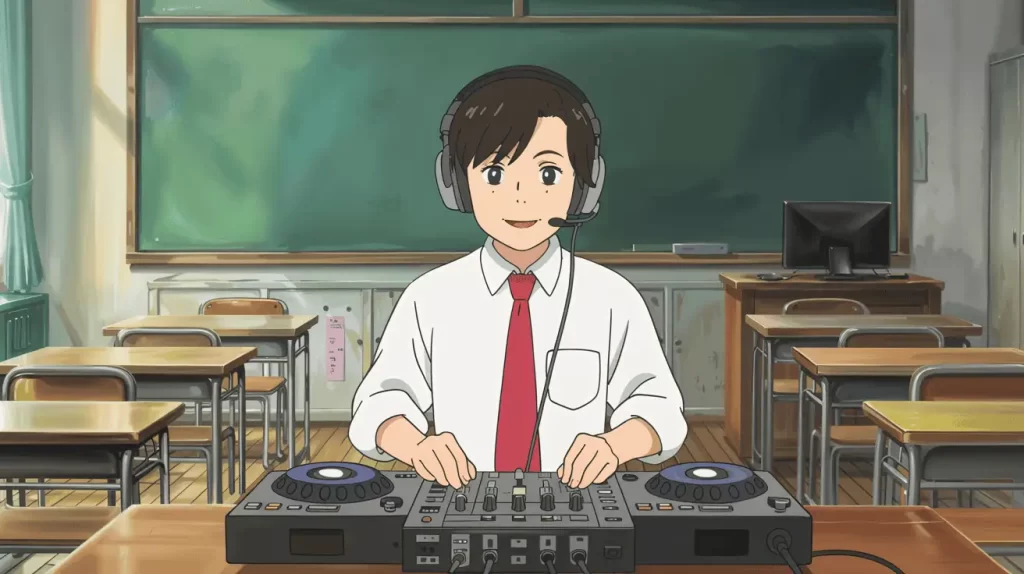
Practical Steps for Educators
You don’t need to build an entire game show set in your classroom (unless… now we’re thinking). Start simple:
- Time-Sensitive Rewards:
Limited-time badges (“earned in the next 24 hours only!”)
Homework extensions that expire - Rotating Leaderboards:
Weekly top contributor board (resets every Monday)
Bonus XP only for students who log in before a certain time - Unlockable Challenges:
Complete Task A to reveal the ultra-secret Task B
Need inspiration? This guide is a great deep dive.
Common Pitfalls and How to Avoid Them
Be careful not to overdo it. If everything is urgent, then nothing is. You don’t want your class feeling like they’re stuck in an endless Cyber Monday sale.
Avoid these missteps:
- Don’t dangle rewards that don’t connect to learning goals.
- Don’t make students feel punished for missing out—just motivated to try next time.
- Keep it fresh. Scarcity loses power if it’s the default.
The Octalysis Framework offers more on balance and behavioral design.
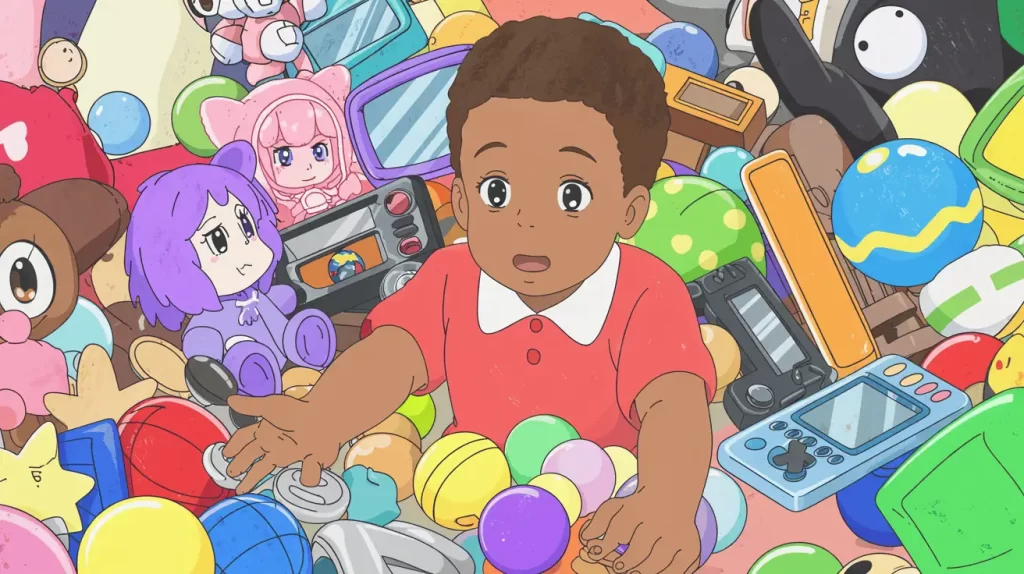
Practical Applications for K-12 Classrooms
So, how does this actually look in your classroom (and not just in theory)? Let’s play show-and-tell with these tested tactics:
Time-Limited Activities
Try “You have 10 minutes to solve five word problems—each correct one gets your team 2 points. GO!”
Why it works:
- Creates urgency
- Minimizes perfectionism (no time to overthink)
- Builds momentum
Pair it with:
- A countdown timer on the projector
- Music that builds tension (any Mission: Impossible fans?)
- Optional mini-prizes for top performers
Exclusive Rewards and Prizes
Channel your inner Willy Wonka:
- “Golden Homework Pass” — skips one boring assignment
- “Mystery Prize Envelope” — students choose whether to take the known reward or gamble (educationally!)
- VIP status for students with perfect attendance that week
Pro Tip: Rotate these perks so they stay fresh. And yes, stickers can still work if they’re holographic and only available on Thursdays. (Or scratch and sniff. They’re making a comeback!)
Scarcity in Supplies or Resources
Group challenges with limited supplies = peak creativity. Give each team:
- 2 paperclips
- 1 foot of string
- 1 index card
And say: “Build the tallest structure possible. You have 15 minutes.”
Now sit back and watch engineering minds activate.
Bonus? You’re building collaboration and strategic thinking, too.
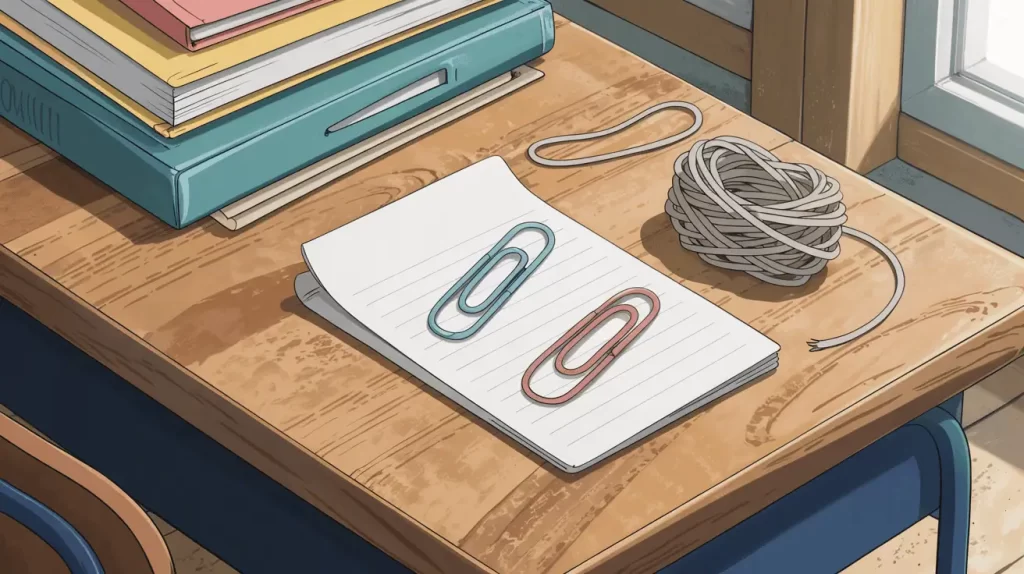
Limited Availability Learning Tools
Use digital scarcity to keep things spicy:
- Post a quiz that expires in 24 hours.
- Offer a limited review session only open to students who submit a form.
- Use Kahoots that change daily—first 5 students get extra credit.
Gamified? Yes. Engaging? Always.
Steps to Create Scarcity & Impatience in the Classroom
Let’s translate this into plug-and-play steps:
1. Define Clear, Time-Sensitive Goals
Start small:
- A 5-minute journaling challenge
- A “Fast Facts” math round with a buzzer
- Friday-only bonus puzzles
Keep the clock visible. Add sound effects if you’re feeling bold.
2. Add Limited-Edition Rewards
Create classroom legends:
- The Traveling Trophy of Excellence
- A digital badge with an expiration date
- The one-time-use “Choose Your Seat Anywhere” pass
More ideas in this beginner’s guide.
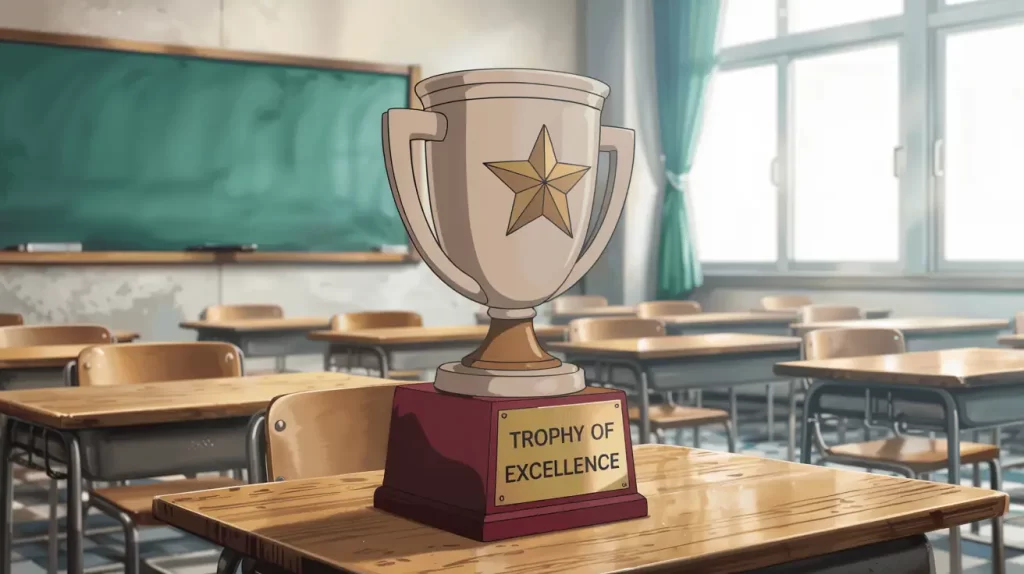
3. Introduce Unlockable Challenges
This is your chance to get creative. Try:
- A storyline with “locked” quests only revealed after 3 lessons
- A “secret mission” envelope given to early finishers
Yes, it’s basically your classroom’s version of a video game side quest.
4. Use Scarcity to Boost Participation
Tie urgency to action:
- “Turn in your project early? You get revision rights.”
- “Respond to this discussion board in the first hour? Extra XP.”
This makes students feel like now matters.
5. Refresh and Rotate
Avoid burnout. Scarcity works best when it’s:
- Unexpected
- Varied
- Tied to effort, not luck
Mix it up. Keep them guessing. Like a Netflix cliffhanger that actually pays off.
Why Scarcity & Impatience Matters
Scarcity and impatience work because we’re human. We want what we can’t have. We want it now. And when students learn that their effort = access to awesome things? They’re in.
Scarcity Shapes Behavior
Scarcity doesn’t make learning gimmicky. It makes it urgent and meaningful.
It shifts thinking from:
“I’ll do this later”
to
“I can’t miss this.”
That mindset flip is priceless.
Impatience Fuels Momentum
Impatience isn’t just an obstacle—it’s a tool. Use it to:
- Reward quick wins
- Shorten feedback loops
- Drive active participation
Pop quizzes with extra credit, fast-response polls, real-time bonus questions—all leverage this beautifully.
Motivation Across Learning Styles
This core drive is inclusive by design:
- Visual cues = timers, icons, pop-ups
- Physical scarcity = tokens, passes, props
- Verbal motivation = “Only 2 left!”
Everyone feels the pull. And you get to decide where it leads them.

Scarcity as a Learning Tool
Scarcity makes students think, solve, and collaborate faster:
- Limited supplies = creative problem-solving
- Short deadlines = focused energy
- Rare privileges = higher participation
Want more ideas? This Gamification Guide goes deeper.
Final Thoughts: Make It Count (Because It Might Disappear)
Scarcity & Impatience reminds students that every choice matters. That learning isn’t endless, it’s now. It’s limited. And it’s worth chasing.
So ask yourself:
- Where could you add a countdown?
- What reward could you rotate in next month?
- How can you make today’s lesson feel like a can’t-miss event?
And next up in our Octalysis series? We’ll explore Unpredictability & Curiosity (Core Drive 7), where surprises and mystery fuel engagement.
Until then, keep experimenting, keep tweaking, and join the email list for weekly power-ups and ideas that make your classroom the place to be.
Learning should feel a little like your favorite game, a mix of challenge, excitement, and rewards you actually care about.
Want to explore more ways to motivate your students with Octalysis Framework?
Visit the Ultimate Guide to Octalysis Framework.
This comprehensive guide provides an overview of the entire framework and links out to more posts exactly like this one to guide you through all 8 Octalysis Framework Core Drives and even more!
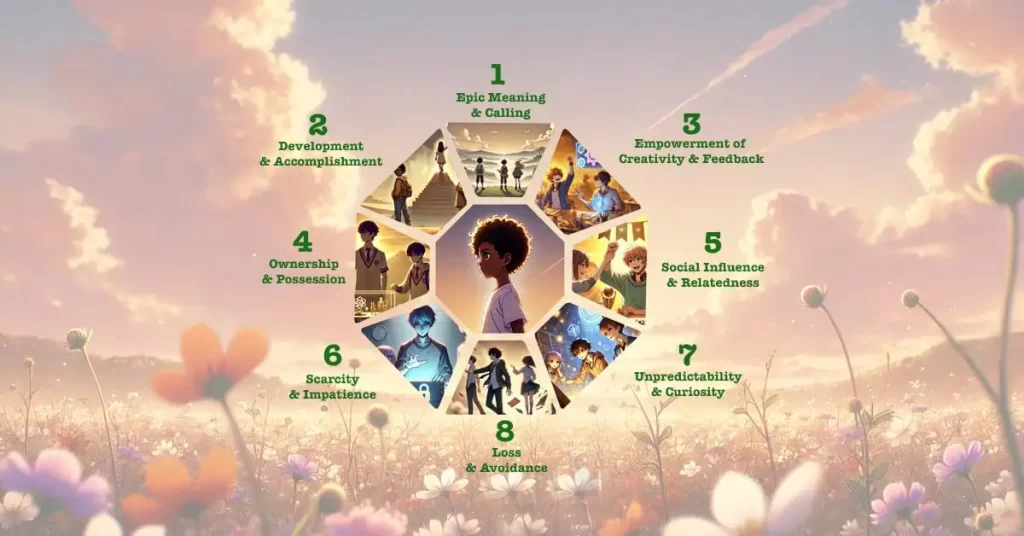
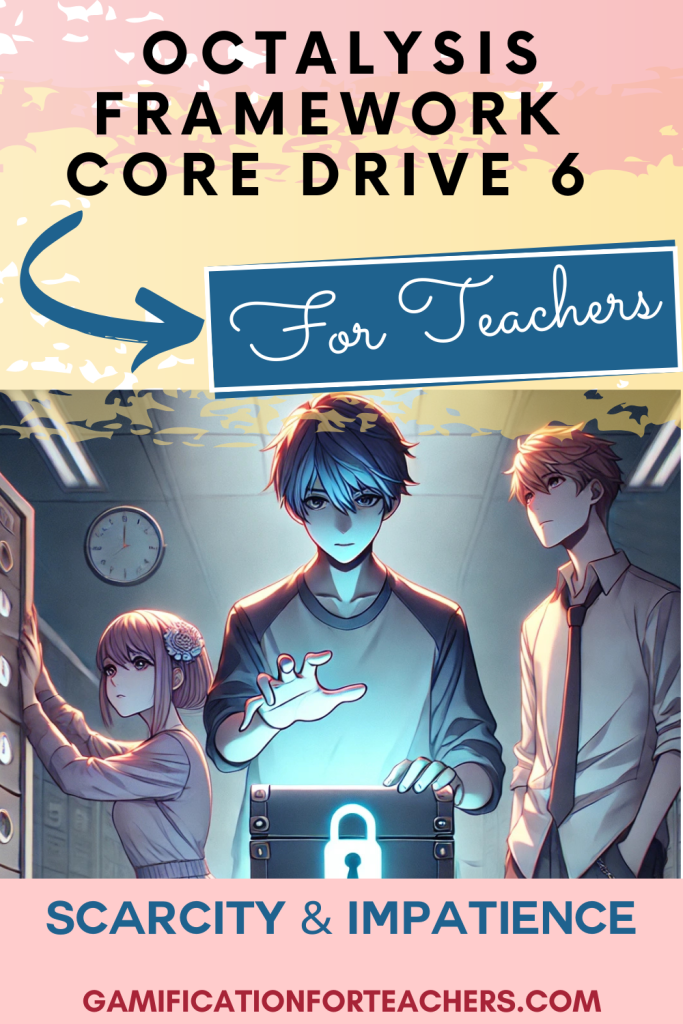

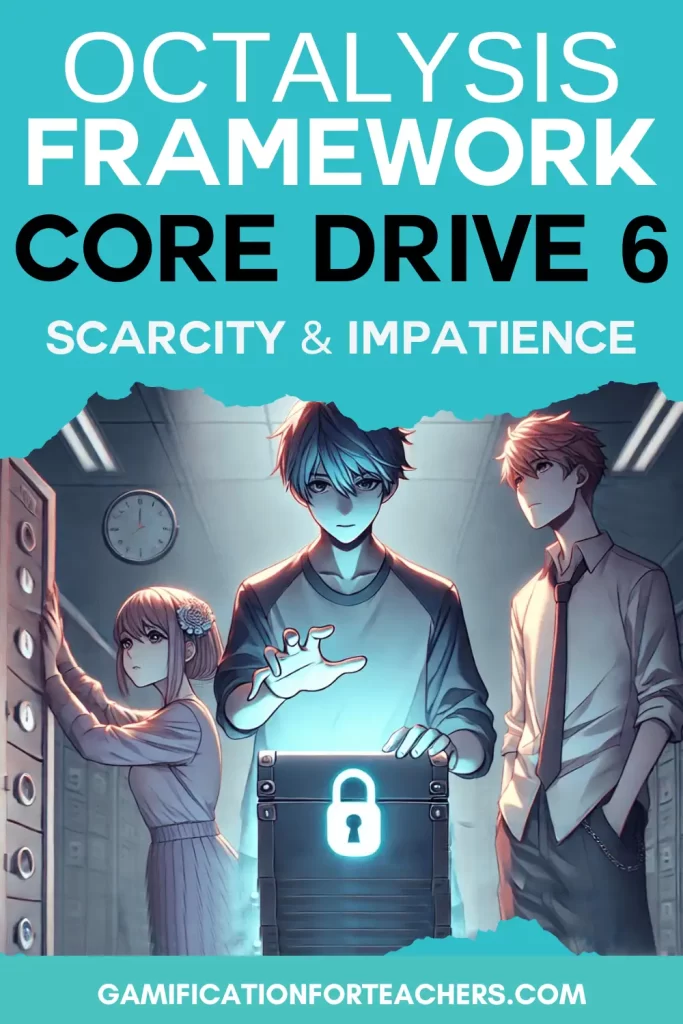
🎮 Octalysis Framework Core Drive 6: Scarcity & Impatience FAQs
Isn’t this just dangling carrots to get kids to behave?
Not exactly. It’s about making learning feel urgent and valuable. When used right, scarcity creates focus and purpose — not manipulation. Think exclusive opportunities, not empty bribes.
Won’t students get stressed out by time limits?
Only if they feel punished for missing them. The key is to frame urgency as excitement, not pressure. Use countdowns for fun challenges, not high-stakes tasks. Bonus: always offer a low-pressure version alongside the limited-time one.
How do I keep rewards from getting stale?
Scarcity loses its power when everything is rare. Rotate rewards, switch up incentives, and build a little mystery. (Think: “Something new drops next Monday 👀”). Scarcity + surprise = magic.
What if a student misses the limited-time activity?
No shame, no blame. Just let them know it’s part of an ongoing system — there’s always another chance to engage. You’re teaching that opportunities are valuable, not that they’re unforgiving.
How do I use this without making everything feel like a race?
Focus on timely action, not speed. “You have until Friday to unlock the bonus task” works better than “First to finish wins.” Scarcity isn’t about being the fastest — it’s about knowing the window won’t last forever.

